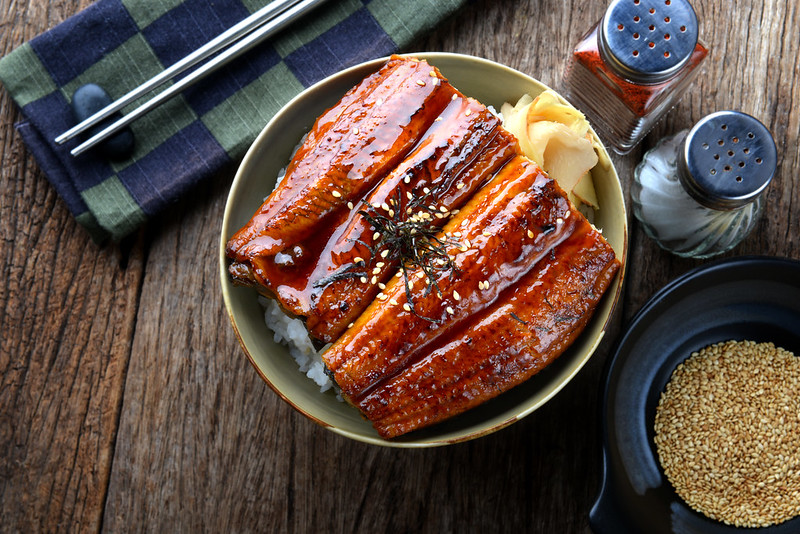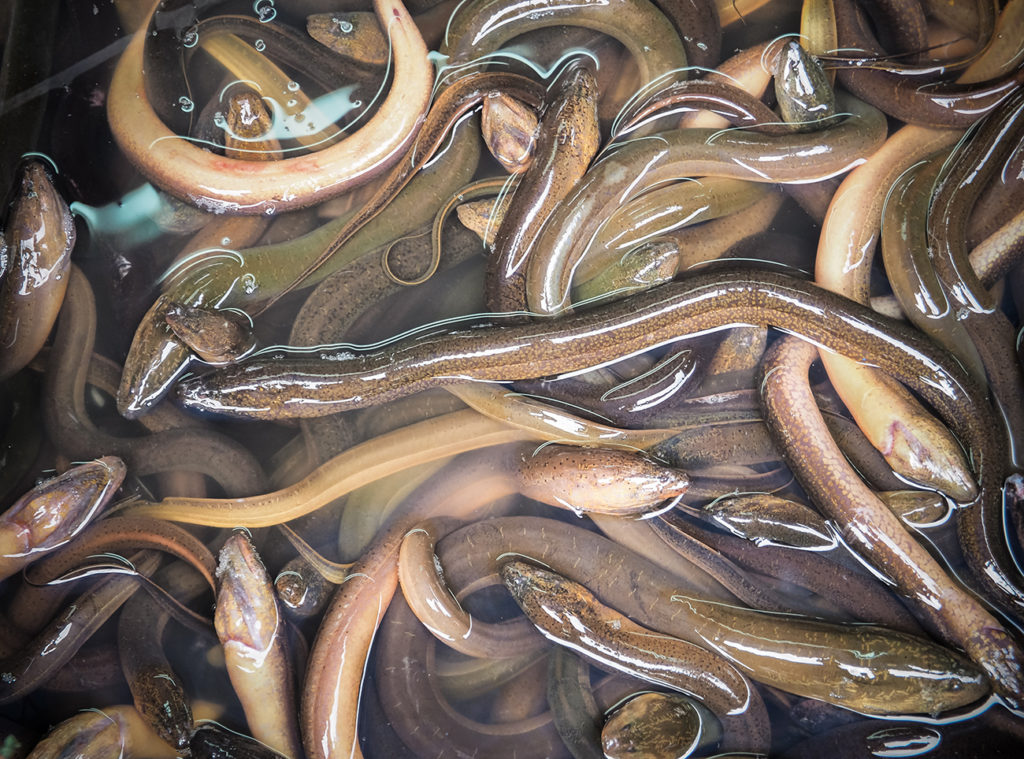
Yummy Unagi
Unagi is a Japanese word for freshwater eel. It is used as an ingredient in delicious and nutritious Japanese food such as unadon (sliced eel served on top of rice) in donburi (Japanese rice topping) meals. The fancier version of unagi, jūbako, is served in a lacquered box. Another popular unagi dish usually served in the Nagoya area is called hatsumabushi (shredded unagi mixed with rice). Unagi is such a versatile ingredient that it is also used to make unagi pie, a type of sweet biscuit made with powdered unagi.
Eels ready for cooking.
Unagi (うなぎ) is a species of anguillid eel also found in other countries such as Taiwan, Korea, China, Philippines, and Vietnam. They live parts of their life in freshwater but spawn in the sea, usually in the North Equatorial Current in the western North Pacific, west of the Mariana Islands.
The larvae of the Japanese eel are then carried westward by the North Equatorial Current and travel all the way north to the Kuroshio Current to East Asia where they live in estuaries, lakes, and rivers. Unagi is an important part of the Japanese food culture and other Asian countries’ cuisines and are raised in aquaculture ponds.
Kabayaki style Unagi.
Regular consumption of unagi contributes to several health benefits: it lowers cholesterol levels and blood pressure, prevents vascular diseases, aids in normal brain development and nervous system functions, reduces the risk of developing arthritis, and promotes good eyesight. Among the notable nutrients found in unagi are vitamins A, B1, D, and E. It also contains healthful unsaturated fatty acids like DHA, EPA, and Omega-3.
Unagi is often prepared in Japan in the kabayaki style, with the fish split in half from the back or belly (butterflied), gutted, deboned, and cut into fillets. Slices of unagi are then skewered and dipped in a sweet soy sauce before being broiled on a grill. A popular custom from the Edo period is to eat kabayaki during the summer for added stamina. Oishi!
